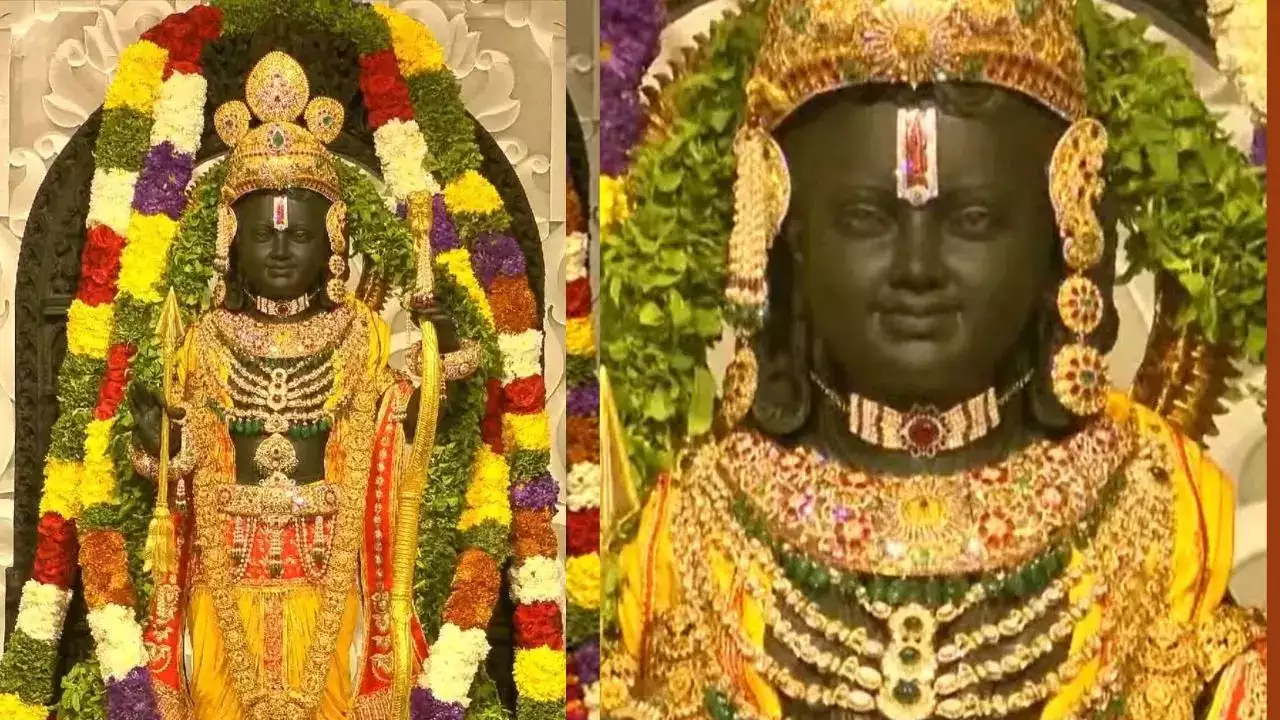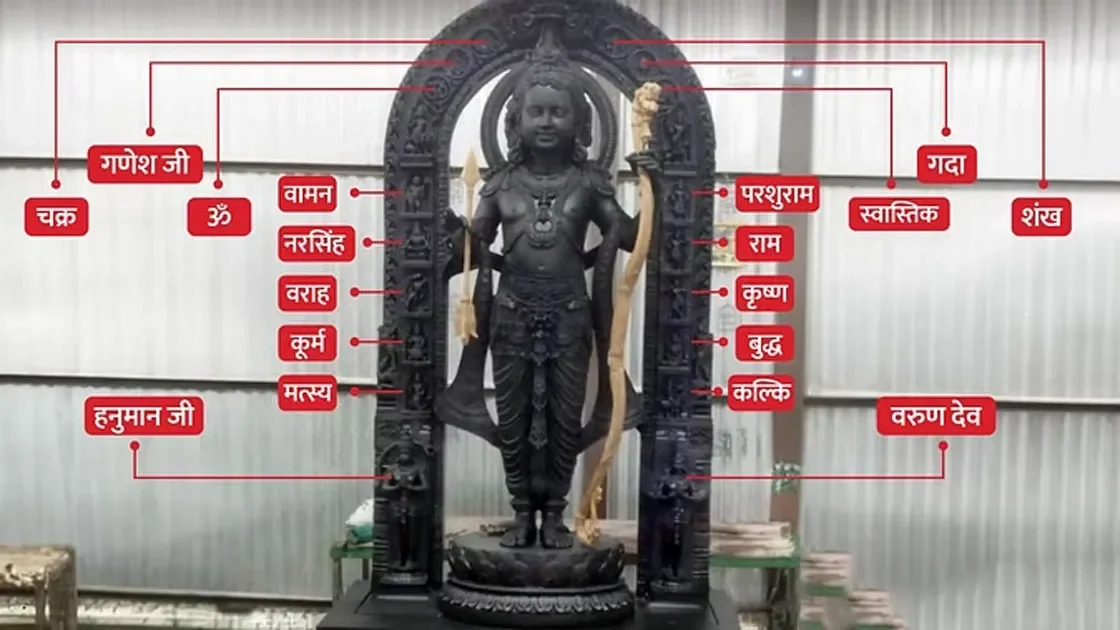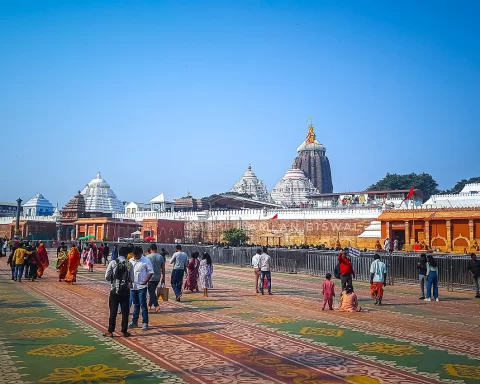The Pran Pratishtha ceremony held on January 22 at Ayodhya’s Ram Mandir marked a historic event, capturing the attention of the nation as Prime Minister Modi conducted the proceedings. Among the various aspects of the ceremony, the revelation of the Ram Lalla idol sparked curiosity and inquiries into why the idol is distinctly black in color.

The Significance of Shyamshila
One primary reason contributing to the black hue of the Ram Lalla idol lies in the choice of stone used for its construction—Shyamshila. This unique stone is celebrated for its enduring nature, capable of withstanding the test of time for over a millennium. The selection of Shyamshila isn’t arbitrary but rather a practical consideration deeply rooted in Hindu rituals.
Scriptural Alignment with Valmiki Ramyana
The decision to use Shyamshila gains further significance from the descriptions of Lord Ram found in the Valmiki Ramayana. Maharishi Valmiki’s intricate narrative portrays Lord Ram with a Shyamal roop, emphasizing a darker complexion. Consequently, the black color of the Ram Lalla idol aligns harmoniously with the scriptural depiction, establishing a profound connection between the idol’s appearance and the sacred text’s detailed descriptions.
Practical Considerations for Longevity
Champat Rai, the General Secretary of Shri Ram Janmabhoomi Teerth Kshetra in the temple, shared insights into the characteristics of the Ram Lalla idol during interactions with the media. Standing at 51 inches tall and sculpted to resemble a five-year-old boy, the idol’s black color isn’t solely a matter of religious symbolism. Instead, it serves a practical purpose by being crafted from Shaligram stone.

Shaligram Stone: Holy and Timeless
Shaligram stone, considered sacred in Hinduism, is a crucial element in the construction of idols representing gods and goddesses. Characterized by its black, smooth, and oval-shaped features, Shaligram stones are often sourced from the bottoms or banks of holy rivers. According to Hindu religious texts, Shaligrams are revered as the idol form of Lord Vishnu, adding to their sanctity.
Preventing Tarnishing in Rituals
The black color of the Shaligram stone isn’t just a symbol of divine presence; it also serves a practical purpose. Rituals and ceremonies involve the application of substances like milk and water, which could potentially tarnish the idol over time. The use of Shaligram stone, with its inherent blackness, acts as a safeguard against tarnishing, ensuring the idol maintains its pristine appearance despite regular contact with ritual offerings.
A Symbol of Devotion and Cultural Heritage
In conclusion, the black color of the Ram Lalla idol in the Ayodhya Ram Mandir is a result of a thoughtful selection of Shyamshila and Shaligram stone. This choice not only aligns with scriptural descriptions but also serves practical considerations in preserving the idol’s longevity and integrity. The Ram Lalla idol stands not just as a religious symbol but as a profound representation of devotion and cultural heritage, destined to inspire reverence for generations to come.
To Get more such updates and crucial information stay in touch with The Digital Today.



